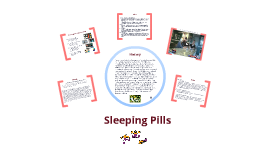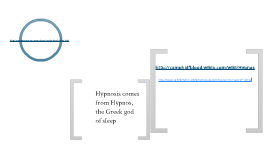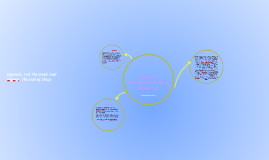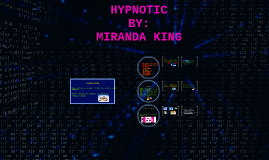Hypnotic
Transcript: Carcinogenicity A recent analysis of both U.S. Food and Drug Administration (FDA) data and clinical trial data shows that nonbenzodiazepine Z-drugs at prescribed doses cause an increased risk of developing cancer in humans. There have been 15 epidemiological studies which have shown that hypnotic drugs cause increased mortality, mainly due to increased cancer deaths. Complex sleep-related behaviors Z-drugs induces amnesia type memory impairments similar to triazolam(Halcion) and Rohypnol. Potential side effects are: sleep walking, sleep eating, Other behaviors include making phone calls, having sex, and getting into the car and driving while not fully awake. Most people do not remember these events later. Various types of Hypnotic Drugs Barbiturate (Schedule II) Pentobarbital (Nembutal) Secobarbital (Seconal) Benzodiazepines (Schedule IV) triazolam (Halcion) temazioam (Restoril) Nonbenzodiazepines (Schedule IV) Zolpidem (Ambien) Eszopiclone (Lunesta) Zaleplone (Sonata) Over the counter sleeping pills Antihistamines (Unisom) Melatonin Is Ambien creating a nation of zombies? Risks Z-Drugs Z drugs - Ambien was the first to reach the U.S. market, in 1992 - are less likely to cause dependency and side effects than the older generation of benzodiazepines such as Ativan and Dalmane. Both classes of drugs activate the neurotransmitter that induces sleep, the gamma-aminobutyric acid (GABA) receptor complex.But the benzodiazepines also relax muscles and reduce anxiety - effects that can be beneficial but have the potential to cause respiratory failure and other muscle-related problems. And they often left users feeling drowsy for hours after awakening.Z drugs are more targeted; designed to activate a specific part of the GABA complex, they get you to sleep with fewer concerns about dependency and side effects.The Food and Drug Administration has approved Ambien and Sonata for short-term treatment of insomnia, up to five weeks. Lunesta and Ambien CR are approved for long-term use, up to six months. None of the Z drugs have been studied or FDA-approved for use longer than six months. Sleeping Pills About 30% of American adults have insomnia symptoms each year Americans spent about $2 billion on prescription sleep drugs in 2010 60 million prescription was written For centuries alcohol and opium were the only drugs available that had sedative-hypnotic effects. The first substance introduced specifically as a sedative and as a hypnotic was a liquid solution of bromide salts, which came into use in the 1800s. Chloral hydrate, a derivative of ethyl alcohol, was introduced in 1869 as a synthetic sedative-hypnotic; it was used notoriously as “knock-out” drops. Paraldehyde was introduced into clinical medicine in the 1880s and was followed by the synthesis of barbital in 1903. Phenobarbital became available in 1912 and was followed, during the next 20 years, by a long series of other barbiturates. In the mid-20th century new types of sedative-hypnotic drugs were synthesized, chief among them the benzodiazepines (the so-called minor tranquilizers).In 1990s, scientists were successful in developing non-benzodiazepine drugs (Z drugs). They are safer than the older barbiturates especially in overdosage and they may, when compared to the benzodiazepines, have less of a tendency to induce physical dependence and addiction, although these issues can still become a problem. History Risks Tolerance, dependence, and withdrawal A review medical publication found long-term use of zolpidem is associated with drug tolerance, drug dependence, rebound insomnia and CNS-related adverse effects. Abrupt withdrawal may cause delirium, seizures, or other severe effects, especially if used for prolonged periods and at high dosages Overdose An overdose of zolpidem may cause excessive sedation, pin-point pupils, or depressed respiratory function, which may progress to coma, and possibly death. Recreational Use As is the case with many prescription sedative/hypnotic drugs, it is sometimes used by stimulant users to "come down" after the use of stimulants such as amphetamines, methamphetamine, cocaine, and MDMA Date-rape drug According to the U.S. Drug Enforcement Administration, zolpidem (Ambien, Stilnox) is quickly overtaking illegal sedatives as the most common date-rape drug. Perpetrators of sexual assault have used zolpidem on unsuspecting victims Commercial Name: Ambien, Lunesta, Sonata

















